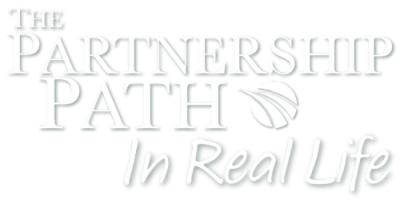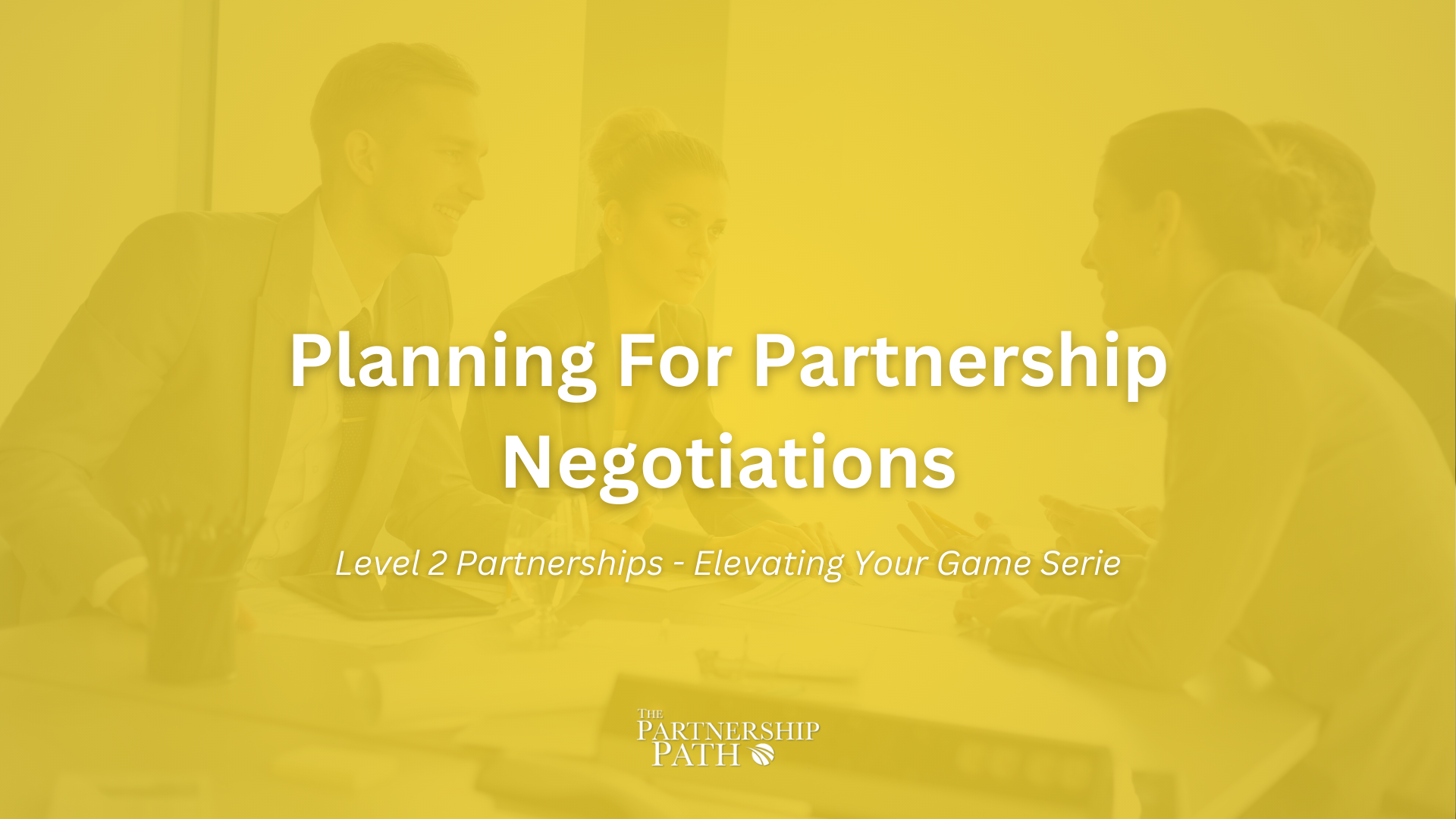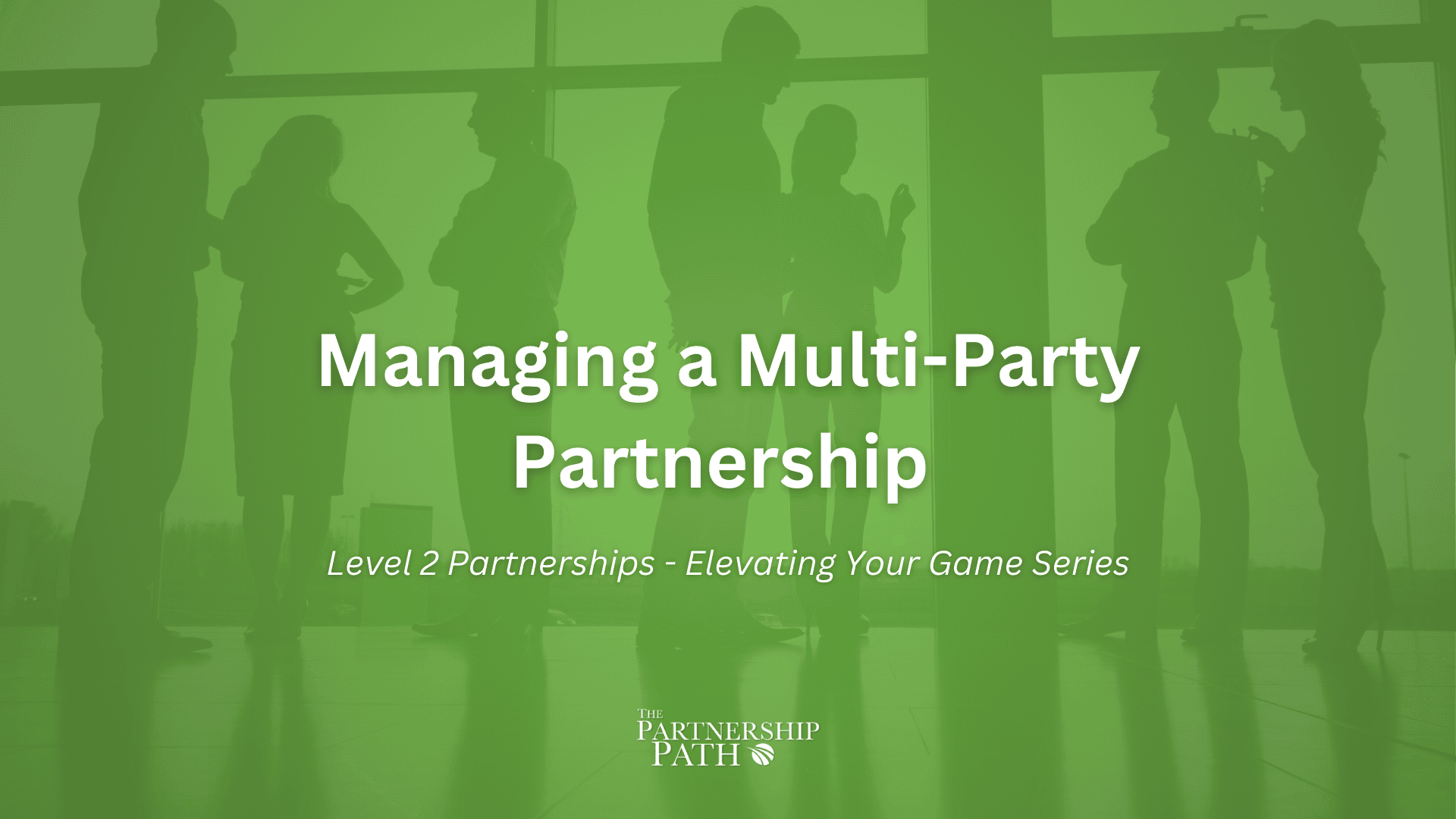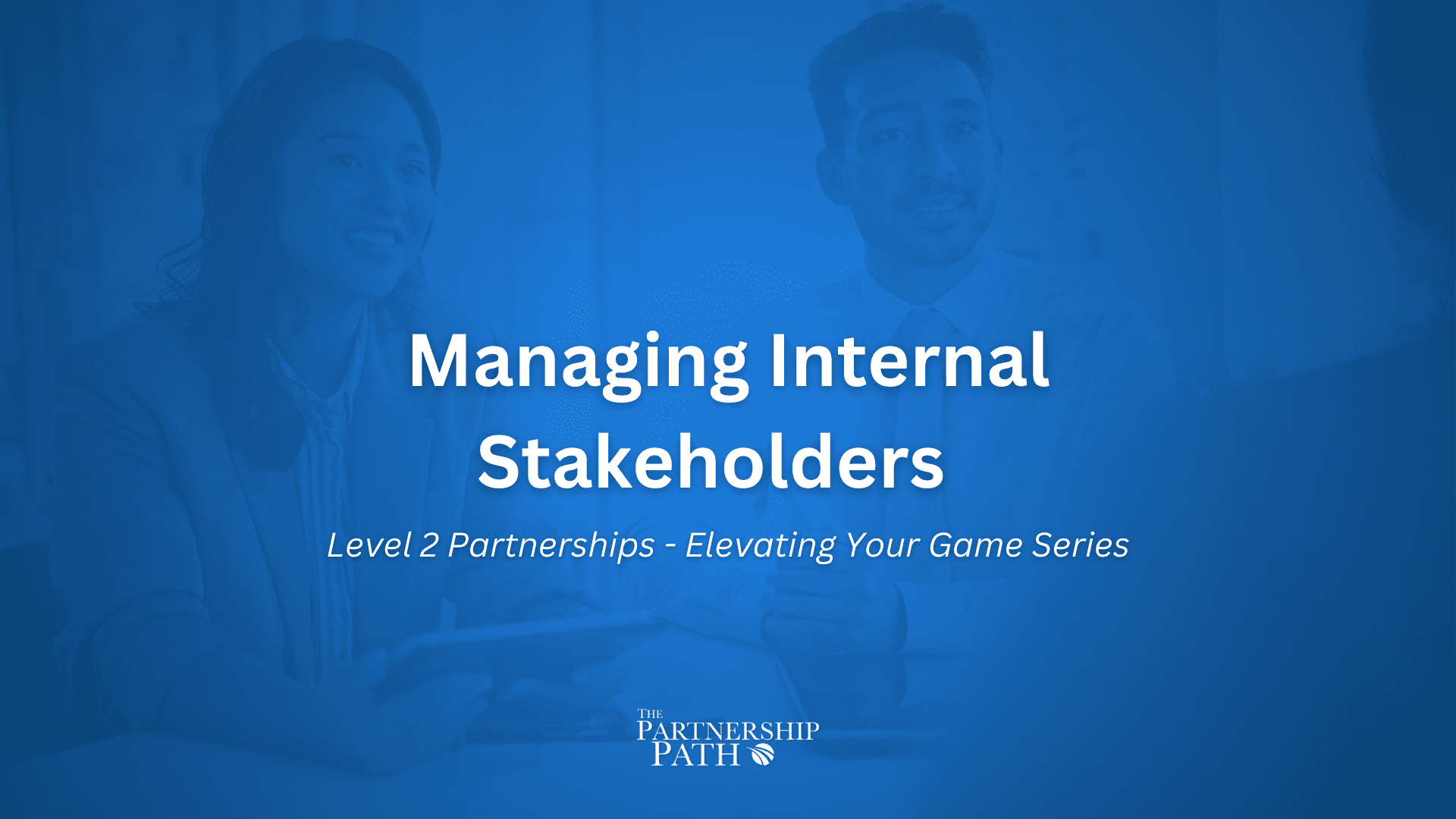IRL Episode
IRL Planning for Partnership Negotiations with Oana Terteleac at Microsoft
Episode Summary
Partnership negotiations can feel like walking a tightrope—one misstep could lead to disaster, while a well-timed decision could open doors to fantastic opportunities. In a recent enlightening conversation on the The Partnership Path in Real Life podcast, John Rudow interviews Oana Terteleac, an expert in forging partnerships, who shares her experiences and strategies for successful negotiations.
This video is an absolute gem because it breaks down the nuances of partnership dynamics in a digestible way, making it not only valuable for professionals but also for anyone looking to improve their collaborative skills.
Transcript
John (00:01)
Well, hello, Oana, and welcome back to the Partnership Path in Real Life. I am so glad to have you on the podcast again. We had you on here last season and I’ve just enjoyed having you on so much. I wanted to have you back again to talk about today’s topic. But in case our audience doesn’t remember you, let’s have you introduce yourself to our listeners. Tell us a little bit about what you do and how long you’ve been working with partners.
Oana (00:30)
Thank you so much, John, for having me again. It’s a pleasure to be here with you and the team. the path that you are envisioning for the partnership for me is a fundamental learning curve that I have been going through in the past couple of years in my career. So I’ve been working in IT for 22 years, with Microsoft for the last 17 plus years, and with partners for 10 plus years. So for sure.
The last couple of years when I was in the UK studying program and getting the benefit of learning from you, it really influenced the way that I see the partnership path forward and in real life. For me, it created benefits that go beyond the immediate success. So introducing myself again for the audience, I’m part of the Microsoft organization. I’m leading the EMEA incubate and launch team for digital natives. I’m serving a very
John (01:16)
Yeah.
Oana (01:27)
special segment of our customers, the ones that are high growth emerging disruptors. So as you imagine, their partnership needs are quite different than the traditional ones. So when you invited me to have a conversation around how do we plan for partnership negotiation, it really got me thinking because as I’m transitioning to this new operating model to our new partners and acknowledging the differences and the diversity that is in this ecosystem.
John (01:33)
face.
Yeah. Yeah.
Great.
Oana (01:57)
It got me to the point where I had to take the principles and the foundations of your coaching and apply them to the new world. And that was quite an interesting journey, I have to say.
John (02:06)
I
love that. Gosh, Lana, you’re making me feel all kind of embarrassed and stuff, but I super appreciate that what we’ve done together in the past is not only stuck with you, but that you’re using it in new ways with this new set of partners. That’s super exciting for me. So thank you. Thank you for that. All right. So you’ve already said what we’re going to talk about, right? This is today’s in real life episode to talk about the episode Tony and I just did on
kind of preparing for whatever negotiations you have with partners, whether that’s a first time new partner or a continuing partner. So let’s just start, let me just open that up. You already mentioned the episode. So let me just start by saying, so what was it about what Tony and I talked about that either resonated for you or, you know, did we miss anything? Kind of give me your reaction to that.
Oana (03:04)
To answer to the question, did you miss anything? It’s hard to say. Both you and Tony have had a very deep and fluent conversation, I have to say, around the partnership. A couple of things that stuck with me are the strategic versus tactical negotiation, getting the right people on the table, negotiating the boundaries, understanding what are the things you are willing to let go. So these are a couple of things that I believe resonated with me because
John (03:20)
Yeah.
Mm-hmm.
Oana (03:33)
I live by them in the day-to-day work, so I can recognize them in my daily job.
John (03:36)
Yeah.
Yeah. Well, let’s start with that then. share with the listeners some of the things that you do to actually get the right people to the table. Let’s start there. So what are some good ways to make sure that you’ve got the right people at the table for the kind of negotiation or discussion that you want to have?
Oana (04:03)
take a step back and look at what Mr. Winston Churchill used to say, like failing to prepare is preparing to fail. for sure, having a good partnership negotiation requires preparation.
John (04:17)
Yeah.
Oana (04:19)
I would say that first of all, in order to make sure you have the right counterparts for the discussion, and it’s not happening like you and Tony used to say in the episode conversation, like having your counterpart in the negotiation meeting, because that may not be enough, with all due respect. The preparation requires a couple of pillars, I would say. It’s the internal preparation, so making sure we as an organization are bringing the right stakeholders to the table, prepare them, debrief them.
tell them what we expect from them to say during the negotiating meeting, understand what are the things that gives and gets, like what the balance of trade, what are the things that they want to put on the table. Like, you know, we have to have some aces under our sleeve. Furthermore, I still think the counterpart of our negotiation on the partner side needs to be our friend. We always remember that partners don’t work for us.
John (05:13)
Yeah.
Oana (05:16)
We need to be mindful that the partner works for themselves and our partner counterpart also works for our partner. Therefore, while we are working to make him an ally, he will be the ambassador and the evangelist within the partner to bring his executives to the table. that means give him some nudgets, give him, hey, look, bring your guys. I’ll show you. You show me yours. I’ll show you mine. Like, bring my stakeholders to the table. You bring yours because
John (05:42)
Right.
Oana (05:46)
If you and I want to have a successful future together and demonstrate success, it means to have our backs covered by our leaders who know what we do, when we do, what we do, and what is basically the expected result. So creating the clarity, first of all, with our counterparts, creating the right expectations, letting them know that we take the partnership very seriously and we are expecting the same level of commitment from their end. It creates two motions.
On one end, it will create the urgency. So everybody also on their end will start running around, gathering data, their own ACs in their own sleeves, understanding what are the pitfalls, what are the things where maybe they have not delivered by the promise. It’s an exercise that we also do because while we are getting to the conversation further, we will want to make sure that we are honest to each other, keep each other honest.
and we don’t have any surprises or any big surprises to our counterpart. We still want them to be our allies after the negotiation meeting finishes.
John (06:55)
Mm-hmm. Look, you used some terms in there that I think are super critical. The first one that really jumped out at me is the concept of thinking of yourself and your counterpart as ambassadors. Like, I think that is so much what you are, right? Which is, it’s not you and your execs on one side of the table and your counterpart and their execs sitting on the other side of the table.
Right? Almost like the right way to think about it is you and your counterpart sitting together on one side of the table and then all of your executives sitting on the other side of the table. And it’s like, you’re trying to essentially coordinate with your ambassador counterpart, how to get these two sets of executives to an agreement that makes sense. And I mean, it’s exactly how diplomatic ambassadorships work. Right? Like you guys have this conversation about, Hey,
Here’s what we think is gonna happen. Here’s what we’re prepping for all that. Of course, you’ve got some aces up your sleeves. But the whole idea is you’re an enabler of that conversation. Does that resonate?
Oana (08:08)
Totally, totally. And having them in the center of our execution mindset, I think also creates a very positive perception because everything that we do every day and repeat every day becomes reality. If our mindset is, look, the core of my work is making my customers and my partners successful.
And if is my mantra, if this is my leading principle, then whatever I will do will be under the umbrella of this principle and it will convey trust. It takes such a long time to build the trust. And now taking the conversation to the specificity of the partners that I’m managing right now with my team that are digital natives. Some of these companies did not even exist three years ago or two years ago. They’re so new. Then what do you need to do?
John (08:54)
Right. Yeah.
Oana (08:59)
and especially before, during and after negotiation process in order to build a trust that did not exist there before, because the partner did not exist there before. So you have to build that very fast. You have to demonstrate success and engagement and commitment very fast in order to make sure that you are delivering by the promise and you are getting them close to you as an organization.
John (09:24)
Yeah. I’m curious, wanted to get your perspective on this. One of the things that Tony and I mentioned at the very end of the episode, we didn’t spend a lot of time talking about it, but I’m curious to get your perspective around transparency, right? I mean, we talk about this, you know, ace up your sleeve type of thing. And yes, there’s always, you know, you have to kind of have your positions planned out, but
Talk to me about how you approach transparency with your counterpart and between the executives. Like how important is that to be transparent in terms of what you want and what you’re willing to give away?
Oana (10:05)
With a high degree of transparency, there is no partnership. The partnership that goes at such deep level is almost like a marriage between the two companies. So a certain level of transparency and quite a high one actually has to be there. The transparency has to go first of all, which is how does the strategic partnership looks like? How does this partnership expected to look like in…
John (10:15)
Yeah.
Oana (10:33)
two years in three years in five years. Like what’s the North Star defining and how do transparency? Like if one of the parties is changing their game, like look, we’re gonna shift our business towards, we used to do business process intelligence and now we’re gonna do document understanding and this is a whole new direction for our company. Then we need to realign the strategic goals of the partnership and that requires a lot of transparency. The more trust exists between the partners,
John (10:35)
it. Yeah.
Oana (11:02)
the earlier in the game they will share their new direction and that will allow us to align fast and be very efficient and agile. Otherwise we may lose all the momentum that we have built in the past with that partner. So for the big things, there is a need for transparency. The rockies is where the partner cannot be totally transparent to us. And I’ll give an example. If a company is planning to go IPO, that’s
really important. This is an information they cannot share no matter how much they love working with you. And this is also part of our business maturity to embrace and to accept that not all the things can be subject to transparency. But the ones that directly impact the short, medium and long term success of the way that we are working together, I think this should be subject to transparency because whatever work is done currently, it will be sabotaged by
John (11:44)
That’s right.
Oana (11:59)
decisions that are being done in this direction in the future.
John (12:01)
Yeah.
So we talked about this preparation of preparing your executives and briefing them and all of that. I want to get your perspective of, if we’ve got some listeners out there who are like, well, what am I supposed to be preparing them for? What information should I be giving them? I’d be curious. You strike me as a very methodical type of person.
disciplined in the way you do some of this. Are there a set of things that you always research about your partner that you want to make sure and brief your executives on? Like, what does that look like? What are some of the things that you’re consistently making sure you know so that your executives know in that negotiation?
Oana (12:53)
So first of all, doing the background check. What are the potential things that could be escalating during that meeting? You don’t want to prepare for rainbows and sunshine and then something else to come out. So I need to have no matter how maybe look, life is life. We may take decisions that affect the partnership and we as ambassadors, we are not responsible for the decisions that either of parties could be making. But being prepared,
John (12:59)
Okay?
Yeah. Okay.
Oana (13:21)
Having visibility on this creates the opportunity to brief our leaders and have them prepared. You need to have a plan B or a plan C basically for all situations. This is how businesses survive. If you don’t have a backup plan, then you may have issues. This is something that I would definitely look into in order to make sure that the leaders are debriefed.
I would very much look into the challenges that my partner is facing. They may be facing challenges from their competitors. They may be facing headwinds in a certain market. They may be facing struggles from some customers with deployments that may have not been so successful enough. you know, having a plan for and an idea for each of these could be a way, like for instance, hey,
Are you struggling with your competitors? Maybe we can create an improved joint value proposition so we can help you win market share against your competitors. We can accelerate cost and motions and make you top of mind for our sellers so they can accelerate in certain industries, in certain geographies, more business with you. And if you’re struggling maybe with deployments, maybe there’s some…
cloud service architecture design service that we could be helping you in order to optimize and perform better on the end customer side.
John (14:50)
Every time you and I talk, wanna I’m just I’m You you remind me of something that I am like, right, right, right, right We got to make sure that people don’t forget that so I just I love having these conversations with you and the one you just did there was to never forget that your partners Your partners are partnering with you For a reason for their business like they have something that they need this partnership for whether it’s
a competitive issue, like we need to be more competitive in this industry or in this market or in this product solution area or whatever it is, there’s a reason they’re partnering with you. And if we lose sight of that, then we are negotiating for all the wrong reasons. Right. And so I just I just love how you you just sort of work that in like it was no big deal. And yet that is such a major point that so many people in your role forget.
that there’s a reason for this partnership and we need to be selling to that reason, not to anything else. Yeah.
Oana (15:56)
I think the whole way that the market is shifting is forcing us to act this way because we have been, I’m part of a generation that was pursuing the stability, stability of the partnerships, stability of the job.
stability of engagement model, operational models and so on. But looking at how fast the world is changing around us, how from geopolitical standpoint, what is applicable today was not applicable yesterday and for sure will not work in tomorrow, forces us to be more mindful of the counterparts we have at the table. This is, we have to remind ourselves a negotiation is not about us. It will eventually make us successful.
but not by putting ourselves in the center of it.
John (16:44)
That’s right. my gosh, Oana, you and I could talk forever. I love having these conversations with you, but as you know, we try and keep these episodes relatively short. We’re already at time. So I’m going to draw close to it here, but thank you so much for coming back on the show and sharing some of your in real life experiences and some advice and tactics for our listeners to use. So thank you again, Oana. I really appreciate you being on the show.
Oana (17:10)
Thank you so much and it’s such a joy every single time I speak to you, John. Much appreciated for the invite.
John (17:15)
All right, we’re going to have you back again, I’m pretty sure.
Oana (17:19)
I that.
Key Takeaways
- Preparation is Crucial: Properly preparing is the foundation of successful negotiations, ensuring clarity and aligned expectations.
- Active and Open Communication: The importance of transparency between partners to foster trust and collaboration cannot be underestimated.
- Understanding Your Partner’s Needs: Knowing your partner’s objectives helps to build stronger partnerships and create win-win situations.




